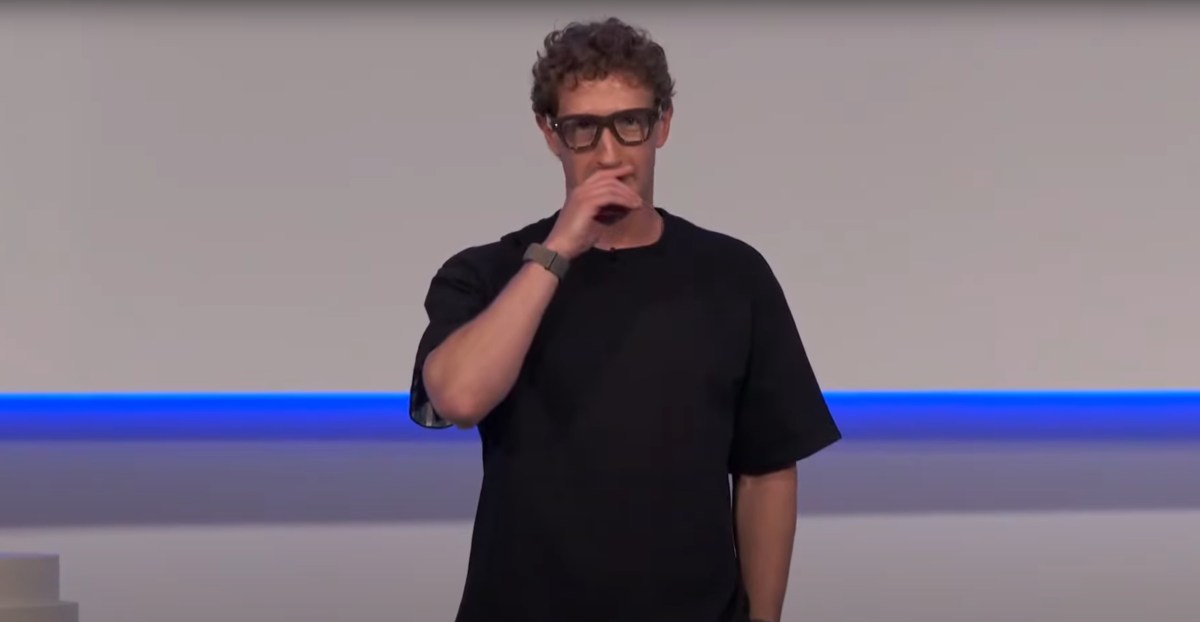
OpenAI reportedly developing smart speaker, glasses, voice recorder, and pin with Jony Ive
Sources: https://www.theverge.com/news/781854/openai-chatgpt-hardware-rumors-smart-speaker-glasses-pin, The Verge AI
TL;DR
- OpenAI is reportedly developing a family of AI devices in collaboration with Jony Ive, with the first product described as pocket-size, contextually aware, and screen-free. The Verge
- The rumored lineup includes a smart speaker without a display, glasses, a digital voice recorder, and a wearable pin, with release targeted for late 2026 or early 2027. The Verge
- OpenAI is reportedly tapping Apple’s supply chain, contracting Luxshare and approaching Goertek to supply components like speaker modules. The Information references unnamed sources familiar with the matter. The Verge
- While May remarks framed the first device as screen-free and pocket-sized, rumors suggest eyewear could follow after the initial product, despite prior statements that the first device wouldn’t be glasses. The Verge
- Apple reportedly canceled a China meeting with manufacturing teams over concerns about executive defections, as Apple staffers reportedly moved toward OpenAI; Tang Tan, OpenAI’s chief hardware officer, has emphasized a more collaborative culture for poached Apple employees. The Verge
Context and background
The Verge summarizes reporting from The Information about OpenAI’s hardware ambitions under the partnership with Apple’s former chief designer, Jony Ive. The broader context includes OpenAI’s public statements about a “family of devices” that would emerge from this collaboration, with the first product described as pocket-size, contextually aware, and screen-free. The Information’ sources indicate OpenAI has already engaged Luxshare, a major Apple assembler, and has approached Goertek to supply components such as speaker modules for a future lineup. This hardware initiative marks a notable step in OpenAI’s expansion beyond software and services toward physical devices. The narrative also intersects with broader corporate movements: Apple reportedly canceled a meeting with manufacturing and supply chain teams in China amid concerns about executives leaving for OpenAI, while Apple employees who previously worked on consumer hardware have increasingly joined OpenAI since the Ive partnership was announced. Tang Tan, OpenAI’s current chief hardware officer and a former Apple product design head, has told people poached from Apple that they will encounter less bureaucracy and more collaboration at OpenAI. Altman’s earlier remarks in May framed the first wave of devices as “a family of devices” born from the Ive collaboration, with the earliest product described as pocket-size and screen-free. Although Altman previously said the first AI device wouldn’t be glasses, ongoing rumors suggest that smart eyewear could follow the initial launch—adding nuance to the earlier claims and indicating a broader hardware roadmap under consideration. The Information’ reporting highlights a strategic push to tap Apple’s supply chain network in China, with Luxshare and Goertek playing roles as potential suppliers for components like speaker modules. The direction underscores OpenAI’s intent to move from software to tangible devices that integrate AI capabilities into everyday contexts.
What’s new
The current round of rumors expands beyond a single smart speaker to include glasses, a digital voice recorder, and a wearable pin as potential additions to OpenAI’s early hardware lineup. The information leak also ties these products to a potential multi-year timeline, with releases targeted for late 2026 or early 2027. The combination of Ive’s design influence, a poised supply chain in China, and the promise of contextually aware, screen-free devices marks a broader hardware strategy than previously disclosed. Additionally, the reporting suggests OpenAI has initiated talent and supplier movements from Apple toward OpenAI in pursuit of hardware development, including the recruitment of suppliers previously involved in Apple’s devices. The Information’ sources describe ongoing efforts to assemble a supply chain capable of delivering speaker modules and related components for multiple form factors. There is historical context around in-ear devices and wearables in discussions about OpenAI’s hardware path. Some sources indicated that Ive was not inclined toward certain body-worn devices, and he openly criticized a prior wearable project (Humane AI Pin). The new rumors, however, indicate a potential sequence where eyewear or other wearables could arrive after the initial, pocket-sized device. While Altman has framed a broader device family, these rumors highlight a phased approach to product deployment.
Why it matters (impact for developers/enterprises)
For developers and enterprises, the potential OpenAI hardware roadmap signals opportunities to integrate AI capabilities directly into devices that people carry daily. A pocket-sized, contextually aware, screen-free device could act as a ubiquitous AI companion, potentially enabling hands-free access to ChatGPT and other OpenAI services in environments where screens are impractical. If Luxshare and Goertek are part of the supply chain, OpenAI could leverage established electronics manufacturing expertise to scale hardware production. The move toward a hardware ecosystem raises questions about software-hardware integration, developer access to device APIs, and the security and privacy implications of on-device AI processing. Enterprises could see new ways to embed AI-powered assistants, voice capabilities, and context-aware features into customer-facing products, pilots, or enterprise workflows. A glasses form factor, if realized, would represent a different interaction paradigm compared with voice-only or screen-based devices, potentially enabling seamless AI interactivity in real-world tasks. From a business perspective, OpenAI’s hardware push reflects a broader trend of AI-powered ecosystems extending beyond software into tangible devices. The involvement of Ive’s design leadership and a dedicated hardware leadership team indicates a focus on both user experience and manufacturability, which is critical for scalable enterprise deployments.
Technical details or Implementation
The Information describes a set of hardware options under consideration for OpenAI’s future product lineup, including a smart speaker without a display, glasses, a digital voice recorder, and a wearable pin. The devices are envisioned as part of a “family of devices” that would originate from the collaboration with Ive, with the first product reportedly pocket-size, contextually aware, and screen-free. The timeline points to late 2026 or early 2027 for the first products, suggesting a phased rollout rather than a single launch. Key supply chain notes include OpenAI’s reported contract with Luxshare, a major Apple assembler, and approaches to Goertek—an assembler known for AirPods, HomePods, and Apple Watches—for components such as speaker modules. The China-based supply chain strategy underscores the importance of established electronics manufacturing networks in delivering new hardware at scale. The Information also notes Apple’s internal caution about defections to OpenAI, including canceled meetings with manufacturing and supply chain teams in China amid concerns about executives leaving the company. On the product design side, Altman has framed the initial device as pocket-sized and screen-free, with a focus on contextual awareness. While Altman previously said the first AI device wouldn’t be glasses, later rumors leave open the possibility that eyewear could arrive after the initial launch. There is also mention that OpenAI has contemplated other body-worn concepts, including in-ear devices, but no final decisions have been publicly disclosed. | Device type | Notable notes | Timeline (targeted) |---|---|---| | Smart speaker (no display) | First device described as pocket-size and contextually aware | Late 2026 / Early 2027 |Glasses | Rumored as part of the lineup; may follow initial product | After initial device |Digital voice recorder | Considered as part of the lineup | Undetermined |Wearable pin | Possible wearable accessory; linked to Ive’s designs | Undetermined |
Key takeaways
- OpenAI is reportedly pursuing a family of hardware devices with Jony Ive, beginning with a screen-free, pocket-sized product. The Verge
- The rumored lineup includes a smart speaker without a display, glasses, a voice recorder, and a wearable pin, with a potential release window in late 2026 or early 2027. The Verge
- Luxshare and Goertek are cited as suppliers or potential suppliers, and OpenAI is tapping Apple’s China supply chain network as part of its hardware ambitions. The Verge
- There are tensions between past statements (the first device not being glasses) and new rumors suggesting eyewear could arrive after the initial product. The Information’s reporting frames this as a phased approach. The Verge
- Poaching from Apple and the potential for a broader device ecosystem underscore strategic bets on hardware alongside AI software capabilities. Tang Tan continues to emphasize collaboration-focused work culture at OpenAI. The Verge
FAQ
-
What devices are rumored to be in OpenAI’s first hardware lineup?
smart speaker without a display, smart glasses, a digital voice recorder, and a wearable pin are among the devices discussed, with the first product targeted for late 2026 or early 2027.
-
Who is involved in the hardware collaboration?
The project is associated with Apple’s former chief design officer, Jony Ive, and OpenAI’s hardware leadership; Luxshare and Goertek are cited as potential suppliers.
-
Will the first device be glasses?
ltman has said the first AI device wouldn’t be glasses, but rumors suggest eyewear could follow after the initial product.
-
What about Apple’s involvement or response?
The reporting notes Apple canceled a meeting with China-based manufacturing and supply chain teams amid concerns about executives leaving for OpenAI, while Apple employees have increasingly moved to OpenAI.
References
More news
First look at the Google Home app powered by Gemini
The Verge reports Google is updating the Google Home app to bring Gemini features, including an Ask Home search bar, a redesigned UI, and Gemini-driven controls for the home.
Meta’s failed Live AI smart glasses demos had nothing to do with Wi‑Fi, CTO explains
Meta’s live demos of Ray-Ban smart glasses with Live AI faced embarrassing failures. CTO Andrew Bosworth explains the causes, including self-inflicted traffic and a rare video-call bug, and notes the bug is fixed.
Shadow Leak shows how ChatGPT agents can exfiltrate Gmail data via prompt injection
Security researchers demonstrated a prompt-injection attack called Shadow Leak that leveraged ChatGPT’s Deep Research to covertly extract data from a Gmail inbox. OpenAI patched the flaw; the case highlights risks of agentic AI.
How chatbots and their makers are enabling AI psychosis
Explores AI psychosis, teen safety, and legal concerns as chatbots proliferate, based on Kashmir Hill's reporting for The Verge.
Google expands Gemini in Chrome with cross-platform rollout and no membership fee
Gemini AI in Chrome gains access to tabs, history, and Google properties, rolling out to Mac and Windows in the US without a fee, and enabling task automation and Workspace integrations.
Microsoft Teams Expands with AI Agents Across Channels, Meetings, and Communities
Microsoft is expanding Teams with Copilot AI agents across channels, meetings, and communities, integrating with SharePoint and Viva Engage, and rolling out for Microsoft 365 Copilot users.





